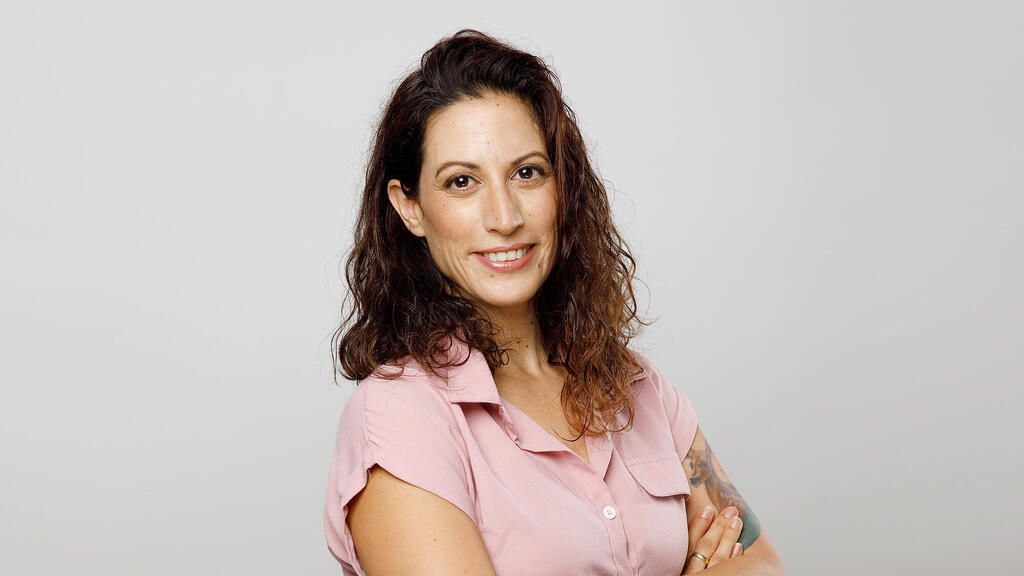Marta Puerto, a product marketing manager from Madrid, was recently laid off and is struggling among thousands of job seekers in today's competitive job market. Although she applied widely, she made no headway at all until she decided to change her approach to marketing and posted a less than two-minute video on LinkedIn showcasing her skills. This time, the product she was marketing was herself.
Four View gallery


Marta Puerto.
(Credit: Screenshot)
One of the many companies posted by the Maltese video was Israeli startup AppsFlyer, which responded with its own video aimed specifically at attracting candidates. Another aspect of the tough job market for candidates is that every job opening attracts hundreds or even thousands of applicants, making the selection process extremely difficult.
Rendelstein says this is more than just a marketing gimmick. “Just three weeks ago, my team had three open positions, and now we have two. We responded in the same style to Marta's video to get attention. In the video: Even the role she was looking for is exactly on my team,'' he explains. The video received thousands of likes and led to more resumes for the open position. “I think so [the video] It introduced a little bit of our company and team culture and made people more open. People reached out and said, 'I know I'm not Maltese, but…' That broke the ice and created some very interesting conversations. ”
Given the state of the job market, employers testify that they receive many more resumes for each open position, in some cases hundreds or even thousands of resumes, but still Screening and finding the best candidates can be difficult. A unique approach that goes beyond a typical resume will help candidates stand out and make the process easier for recruiters.
Four View gallery


Gaston Rendelstein.
(Credit: AppsFlyer)
“It’s true that the amount of resumes we received went up after the video, but the quality went up as well. It's important. A sense of humor and not taking yourself too seriously is really important.'' I'm looking for people who are humble and open. That's exactly what this video led to. I received resumes from some very interesting people. Even people who I contacted in the past and didn't get a reply suddenly started sending me a few replies. “A few days after the video was posted,” Rendelstein said.
At AppsFlyer, part of our recruitment process for candidates for client-facing roles includes creating a two-minute introductory video based on a series of questions, including why you're interested in this field . “The goal is to understand people beyond their resumes. Personally, I'm a little allergic to resumes. I almost never read them. There's a certain standardization, so… Immediately go to LinkedIn. At the end of the day, it's just written words and content. People write about themselves because their company gave them a certain title that doesn't mean anything.
“In video, you can see exactly how people communicate, especially when it comes to marketing roles. I see if they can command an audience and speak well in public. I think videos help good candidates stand out from the crowd because they need to. Sometimes you'll receive a video of the person on their walk or at home, rather than just a summary of their resume. This will give you an idea of what the person is like and whether or not they are worth meeting. Unfortunately, many of the videos that people record during the interview process are very dry. This makes it a dangerous tool for candidates who don't know how to use it.
“For example, two years ago, we had a candidate who produced and edited a two-minute video instead of taking a regular photo in front of the camera. It was great and gave me a sense of what kind of professional she was. “Because when she came here, she was very creative, she had a very big vision, she was outside the box,” he says.
IT management company Atera recently hired someone. That person sent a video explaining why he should be specifically hired and what value he would add to the role. “Videos definitely helped candidates stand out and made a good impression on the recruiting team,” says Shir Portal, Talent Acquisition Manager at Atera.
The candidate was applying for a customer success role, and video gave them a huge advantage. “This is a role that involves a lot of interaction with customers around the world, and having the ability to 'break the ice' with customers and communicate effectively is key. Therefore, the video definitely gave candidates a relative advantage and created a personal impression. There was a connection and it reflected his suitability for the role,” she says.
However, video isn't always the right strategy for every role. For example, if the candidate doesn't seem suitable for the position they're applying for, or if the video quality isn't good enough, it could do more harm than good. “Generally speaking, if a video is well-edited, high-quality and makes people smile, it's great and adds a lot of value,” he says of Portal.
Four View gallery


Sill portal.
(Credit: Lilach Zamir)
Video is not the only method candidates use to stand out. A year ago, Gal Segev hung a sign on his balcony in Tel Aviv's midtown district that read in English: “Looking for a human resources manager? Hire me!” She attached her QR code to her LinkedIn profile. The move made headlines, and within two weeks she signed her contract as Kodem's head of human resources.
“I started my career in marketing and wanted to be clear about my skills and who I am during the job search process. [companies] Not only will I search, but it will come to me [for them]. Thanks to this billboard and this campaign, I have been able to reach my target audience and also showcase the different sides of who I am and what I am already bringing to the role at this stage. Ta. As an HR professional, when I look at a candidate's application, I often try to understand who they are. It is very difficult to get to the stage of expressing yourself, so it is better if you have the opportunity in advance. For example, a graphic designer can design something, or a video creator can create something that shows themselves,” she says.
Four View gallery


Gar Segev.
(Credit: Gal Segev)
Lately, due to the war and the labor market situation, we have seen a lot more posts from job seekers. Due to this situation, these posts are received with understanding and a willingness to help. One of her posts, of a woman trying to help her husband who lost his job while in the reserves, reached Cycode's human resources director, Shani Egos.
“It’s inspiring and heartwarming to see people make such extraordinary gestures. There is a lot of mutual support and willingness to help with different things, including finding a job, in the startup community, and in Israeli society in general.” There are endless efforts and groups to do this. “It's a very creative effort, so it's getting a lot of feedback and shares online. Unfortunately for us, he's not very well suited for the currently open positions.” It wasn't a good fit. But I understood that he had a lot of inquiries and was in high demand.'' So, it didn't work out for us at the moment, but I realized that the post got a lot of attention. I was happy for him and of course shared it,” she says.
Such messages might have been seen as hopeless or uninteresting in other times, but during the war they were received with empathy and a desire to help. “Probably, before the war, such a message would have been ignored, especially if the search was very specific. But today, during wartime, especially the desire to support reservists in all areas “And hiring is one way to do that.'' I personally forwarded his profile into the company, even if it wasn't exactly what we were looking for,'' Egos said. says.
In general, she agrees that a unique and creative approach increases your chances of being accepted into the right position. “In today's market, where companies are hiring intensively for very targeted and well-defined roles, thinking in innovative and unique ways can never hurt, or even be advantageous. Yes, because it creates exposure, and the more exposure you have, the more doors open,” she says.


